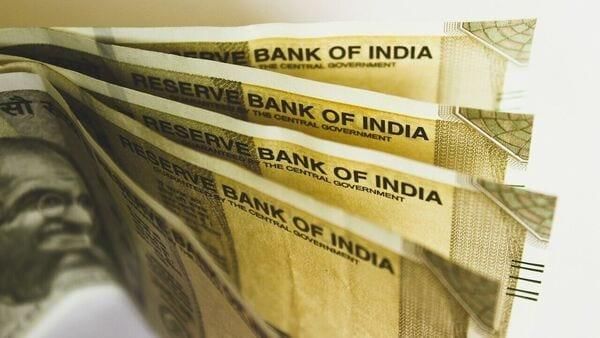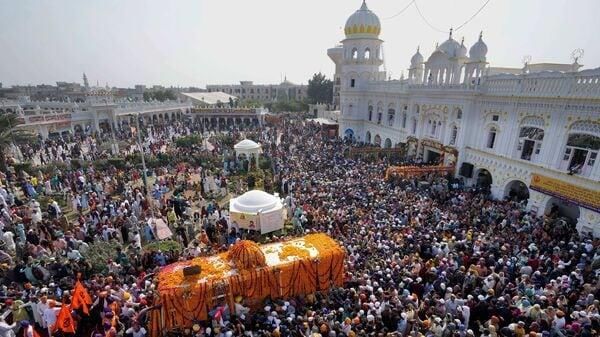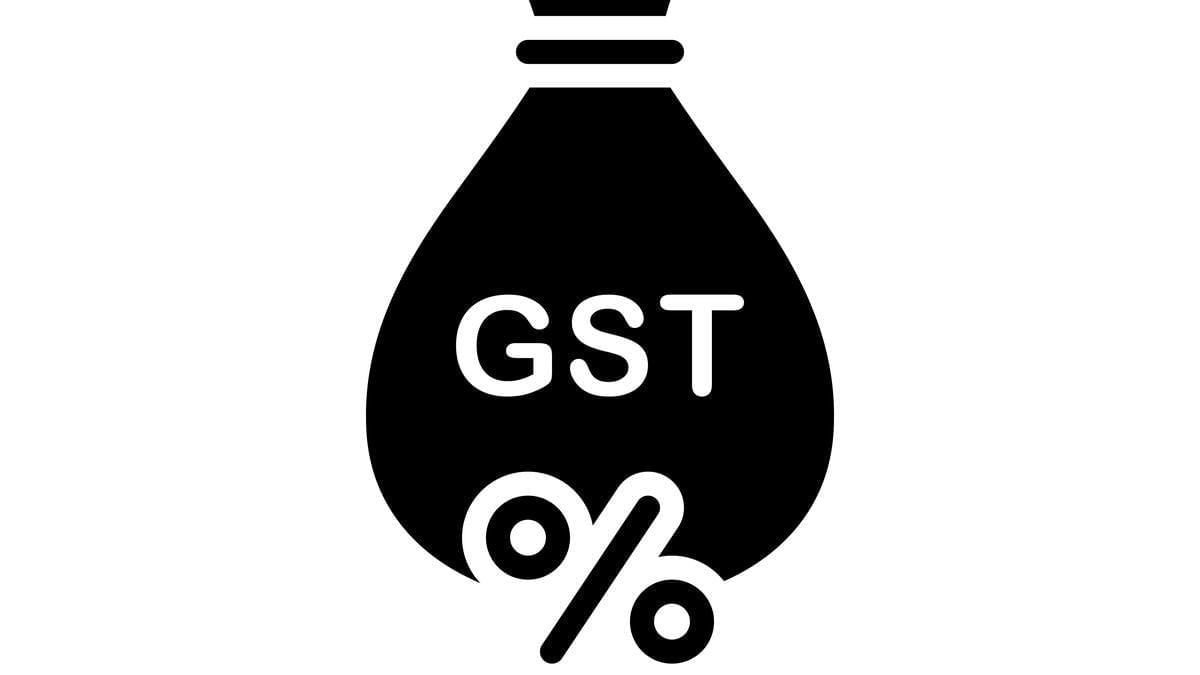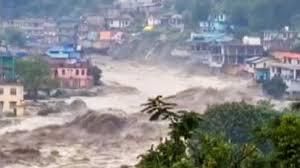UPSC Daily Current Affairs: 17th September 2025 | Current Affairs & Hindu Analysis: Daily, Weekly & Monthly PDF Download
GS3/Economy
NPS to UPS: Govt Extends One-Time Option
 Why in News?
Why in News?
The central government has extended the deadline for employees to opt for the Unified Pension Scheme (UPS) under the National Pension System (NPS) until September 30, 2025. Despite approximately 23.94 lakh employees being eligible for this option, only around 40,000 have made the switch as of now. To manage the service matters for those choosing the UPS, the Department of Pension and Pensioners’ Welfare has issued the Central Civil Services (Implementation of the Unified Pension Scheme under the National Pension System) Rules, 2025, on September 2.
Key Takeaways
- The government has allowed central employees who joined between April 1 and August 31, 2025, under the NPS to migrate to the UPS.
- This one-time option aligns with the existing cut-off for other eligible categories and ensures flexibility in post-retirement financial planning.
Additional Details
- Switch Option from UPS to NPS: UPS subscribers have a one-time option to switch to NPS but cannot return to UPS. The switch must be made at least one year before retirement or three months before voluntary retirement (VRS). This option is not available in cases of dismissal or pending disciplinary actions.
- Difference from Old Pension Scheme: Before the UPS, employees hired before January 1, 2004, were under the Old Pension Scheme (OPS), which guaranteed fixed pensions. The UPS, introduced in April 2025, offers a guaranteed pension of 50% of the average basic pay of the last 12 months, provided the employee has served a minimum of 25 years.
- Financial Contributions: Under the NPS, employees contribute 10% of their basic pay while the employer contributes 14%. The UPS requires equal contributions from both employee and employer (10% each), plus an additional 8.5% from the government to fund the assured pension.
- UPS ensures a minimum monthly payout of ₹10,000 after 10 years of service, ensuring greater financial security compared to NPS, which does not guarantee a minimum payout.
Despite the government's efforts to promote the UPS and the extension of the deadline, the uptake remains low as many employees still prefer the OPS due to its lack of required contributions and guaranteed benefits. The Central Secretariat Service Forum has expressed concerns about both NPS and UPS, advocating for a complete return to the OPS.
GS1/History & Culture
ASI to Revise Sarnath Plaque, Credits Benares Ruler’s Family
Why in News?
The Archaeological Survey of India (ASI) is set to update the Sarnath plaque to acknowledge the contributions of the Benares ruler’s family in preserving the heritage site, rather than attributing this credit solely to British officials, ahead of a visit from a UNESCO team.
Key Takeaways
- Sarnath is a significant Buddhist site located near Varanasi, Uttar Pradesh.
- The updated plaque will recognize Jagat Singh's contributions to the heritage site from the late 18th century.
- This revision reflects a broader movement to decolonize historical narratives in India.
Additional Details
- Sarnath: Located about 10 km from Varanasi, Sarnath is revered as the site where Gautama Buddha delivered his first sermon after attaining enlightenment, marking the beginning of the Buddhist community.
- Buddha’s First Sermon: Around 528 BCE, Buddha shared the Four Noble Truths and the Eightfold Path here, establishing core Buddhist philosophy.
- Mauryan Patronage: Emperor Ashoka visited Sarnath in the 3rd century BCE, commissioning stupas and pillars, including the famous Ashokan Lion Capital, which is now India's national emblem.
- Historical Attribution: Recent scholarship suggests that Jagat Singh's excavations in 1787-88 were pivotal in uncovering Sarnath's relics, challenging previous narratives that credited British officials.
- Significance of the Revision: The upcoming plaque change is part of a larger effort to recognize local contributions to heritage preservation and align with India's cultural diplomacy efforts.
This revision not only aims to correct historical records but also emphasizes the importance of recognizing indigenous contributions to heritage sites, particularly as Sarnath is a strong candidate for inclusion in UNESCO's World Heritage List.
GS1/History & Culture
Sarnath and UNESCO Nomination
 Why in News?
Why in News?
The Archaeological Survey of India (ASI) plans to install a revised plaque at Sarnath, acknowledging Babu Jagat Singh (1787–88) for revealing its archaeological significance, rather than attributing this discovery to British archaeologists.
Key Takeaways
- Sarnath is located near Varanasi, Uttar Pradesh, at the confluence of the Ganga and Varuna rivers.
- It holds religious significance as the site where Gautama Buddha delivered his first sermon in 528 BCE.
- Key monuments include the Dhamek Stupa, Ashoka Pillar, and Sarnath Archaeological Museum.
- Recent excavations reveal a long history of Buddhist activity at the site.
Additional Details
- Location: Sarnath is situated near Varanasi, Uttar Pradesh, where the Ganga and Varuna rivers converge.
- Religious Importance: This site is renowned as the place where Gautama Buddha delivered the Dhammachakkappavattana Sutta, marking the establishment of the Sangha.
- Key Monuments:
- Dhamek Stupa: Built around 500 CE, standing 39 m high with a diameter of 28 m.
- Ashoka Pillar: Features the Lion Capital, which is India’s national emblem.
- Chaukhandi Stupa: An octagonal tower added during the Mughal period.
- Mulagandha Kuti Vihar: Contains frescoes depicting the life of Buddha.
- Sarnath Archaeological Museum: Houses the original Lion Capital and various Buddhist sculptures.
- Archaeological Findings: Excavations over more than 200 years, notably by B. R. Mani (2013–14), indicate Buddhist presence predating Ashoka.
- Holy Site: Recognized as one of Buddhism’s Four Holy Places, alongside Lumbini, Bodh Gaya, and Kushinagar.
- Historic Role: By the 7th century CE, Sarnath was home to 30 monasteries and over 3,000 monks, thriving under Mauryan, Kushan, and Gupta patronage.
The ongoing plaque controversy highlights the need for historical accuracy, as the current plaque credits British archaeologists for the discovery of Sarnath, while Jagat Singh's descendants argue for his rightful acknowledgment as the first to uncover its remains. ASI has confirmed that a revised plaque will be installed soon to reflect this correction and address the biases present in many earlier plaques.
Additionally, Sarnath is officially proposed for inclusion in the World Heritage List for the 2025–26 cycle, after having spent 27 years on the tentative list. This move represents India's commitment to preserving its rich Buddhist heritage while promoting itself as the birthplace of Buddha.
[UPSC 2019]
In which of the following relief sculpture inscriptions is ‘Ranyo Ashoka’ (King Ashoka) mentioned along with the stone portrait of Ashoka?
- (a) Kanganahalli*
- (b) Sanchi I
- (c) Shahbazgarhi
- (d) Sohgaura
GS1/History & Culture
Nankana Sahib Pilgrimage
 Why in News?
Why in News?
The Union Ministry of Home Affairs (MHA) has instructed State governments to halt the processing of applications for Sikh pilgrims wishing to visit Nankana Sahib, Pakistan, for the November 2025 birth anniversary (Parkash Gurpurab) of Guru Nanak Dev Ji.
Key Takeaways
- Nankana Sahib is a significant pilgrimage site for Sikhs, located in Punjab, Pakistan.
- The birthplace of Guru Nanak Dev Ji, the founder of Sikhism.
- The MHA's directive affects the upcoming celebrations of Parkash Gurpurab.
Additional Details
- Location: Nankana Sahib is situated in the Punjab province of Pakistan, near Lahore.
- Historical Significance: It is recognized as the birthplace of Guru Nanak Dev Ji, who was born in 1469. The site was previously known as Rai Bhoi Di Talwandi but was renamed in honor of Guru Nanak.
- Major Shrines:
- Gurdwara Janam Asthan: Constructed over Guru Nanak's birthplace by Maharaja Ranjit Singh between 1818 and 1919.
- Other important sites include Gurdwara Patti Sahib, Bal Leela, Mal Ji Sahib, Kiara Sahib, and Tambu Sahib.
- Shrines linked to Guru Arjan (5th Guru) and Guru Hargobind (6th Guru) are also found in the vicinity.
- Cultural Relevance: This site is a pilgrimage destination for millions of Sikhs around the world and plays a crucial role in the annual Parkash Gurpurab celebrations.
Guru Nanak Dev Ji (1469–1539) is a pivotal figure in Sikhism. He was born in 1469 at Talwandi (now Nankana Sahib) and attained enlightenment in Sultanpur Lodhi in 1496. His teachings emphasized a direct connection to the formless God (Nirankar) and rejected rituals, caste systems, and idol worship. He advocated for the following core principles:
- Three Pillars:
- Naam Japna: Remembrance of God.
- Kirat Karna: Honest work.
- Vand Chhakna: Sharing with others.
- Equality & Justice: Guru Nanak promoted gender equality, community service (Seva), and communal dining (Langar).
- Key Message: “Ek Onkar Satnam,” signifying the oneness of God and humanity.
- Death: He passed away in 1539 at Kartarpur Sahib (in present-day Pakistan) and appointed Guru Angad Dev Ji as his successor.
In the context of Bhakti Saints during the fall of the Lodi Dynasty and Babur's rise, consider the following:
- Which among the following Bhakti Saints was/were preaching when the Lodi Dynasty fell and Babur took over?
- 1. Dadu Dayal
- 2. Guru Nanak
- 3. Tyagaraja
- Options:
- (a) 1 and 3
- (b) 2 only*
- (c) 2 and 3
- (d) 1 and 2
GS3/Economy
GST 2.0 — Short-Term Pain, Possible Long-Term Gain
 Why in News?
Why in News?
The Goods and Services Tax (GST), aimed at establishing a destination-based tax system, was designed to enhance efficiency in taxation by ensuring that taxes are ultimately borne by final consumers, with input taxes being rebated. However, the initial implementation faced challenges including multiple tax rates, inverted duty structures, and significant compliance costs. The new GST rate structure, set to take effect on September 22, 2025, represents a substantial revision with wide-ranging implications for consumption, production, government revenue, and overall macroeconomic stability.
Key Takeaways
- The 2025 reform simplifies the GST rate structure by consolidating most goods and services into three main tax rates: 0%, 5%, and 18%, with a 40% demerit rate for luxury and sin goods.
- About 80% of the 546 goods reviewed will see tax rate reductions, benefiting sectors such as textiles, automobiles, and healthcare.
- Despite potential consumer benefits, the reforms may lead to significant revenue losses for the government and fiscal instability.
Additional Details
- Revenue Implications: GST revenue (R) is calculated as the product of the tax rate (r) and the tax base (E). While lower tax rates can stimulate demand, they may not proportionally increase overall revenue, leading to potential revenue declines.
- Shortfall Projections: The Ministry of Finance estimates an annual revenue loss of ₹48,000 crore, which could significantly impact fiscal stability.
- Income Effects: The reform may initially boost disposable incomes for consumers of essential goods, but lower GST rates could lead to shifts in consumption towards higher-rated goods, potentially benefitting the government in the long run.
- Cascading Issues: The revised GST structure fails to eliminate all cascading effects, as exempt goods do not allow for input tax credits (ITC), complicating the claiming process for businesses.
- Macroeconomic Challenges: With nominal GDP growth falling short of projections, achieving GST revenue targets may become increasingly difficult, pressuring both central and state budgets.
In conclusion, the 2025 GST reforms are a significant effort to streamline the tax system and boost economic activity. They promise lower prices and increased disposable incomes, particularly in labor-intensive sectors. However, the associated fiscal costs and unresolved inefficiencies pose challenges that could undermine the long-term effectiveness of these reforms. Sustainable growth will ultimately require a focus on improving investment capacity and productivity.
GS3/Science and Technology
What are Stablecoins?
 Why in News?
Why in News?
Stablecoins are currently under regulatory scrutiny worldwide. The Bank of England has proposed ownership limits for individuals (£10k–£20k) and businesses (£10 million) to mitigate risks to the banking system.
Key Takeaways
- Stablecoins provide price stability and are often used for fast, low-cost cross-border transactions.
- They are primarily a bridge asset in crypto markets rather than being commonly used for retail payments.
Additional Details
- Definition: Stablecoins are cryptocurrencies designed to maintain a stable value, typically pegged to fiat currencies, commodities, or other cryptocurrencies.
- Types of Stablecoins:
- Fiat-backed (e.g., Tether/USDT)
- Commodity-backed (e.g., gold, silver, oil)
- Crypto-backed (collateralized by other cryptocurrencies)
- Algorithmic (maintaining peg through programmed supply and demand adjustments)
- Example: Tether (USDT) is theoretically backed by cash and US Treasuries.
- Market Growth: Stablecoin market could grow tenfold to reach $2 trillion by 2028, according to Standard Chartered (April 2025).
Risks Associated with Stablecoins
- Financial Stability Risk: Stablecoins are vulnerable to bank-run scenarios, as demonstrated by the TerraUSD collapse in 2022, which lost 60% of its peg value.
- Banking System Impact: Stablecoins can drain deposits from banks, affecting their lending capacity.
- BIS Concerns:
- Singleness: Deviations from fiat peg in secondary markets.
- Elasticity: Limited expansion due to reserve requirements.
- Integrity: Weak KYC processes can facilitate money laundering and terror financing.
- Cybersecurity: DeFi-linked stablecoins are prone to hacking and theft.
- Regulatory Gaps: The absence of uniform global standards leads to issues with fraud and accountability.
Global Regulatory Approaches
- United States, GENIUS Act (2025): Only insured financial institutions may issue stablecoins, requiring them to hold 1:1 low-risk reserves and comply with AML/CFT regulations.
- European Union, MiCA (2024): Regulates E-money Tokens (EMTs) and Asset-Referenced Tokens (ARTs), restricting issuers to authorized EU firms and enforcing strict reserves and consumer protection.
- Hong Kong, Stablecoin Ordinance (2025): Licensing by the HK Monetary Authority requires full high-quality liquid reserves and adherence to strict audits and AML/CFT rules.
- United Kingdom, Bank of England: Proposed measures to prevent rapid deposit outflows and ensure financial stability.
UPSC 2016 Question
With reference to 'Bitcoins', sometimes seen in the news, which of the following statements is/are correct?
- 1. Bitcoins are tracked by the Central Banks of the countries.
- 2. Anyone with a Bitcoin address can send and receive Bitcoins from anyone else with a Bitcoin address.
- 3. Online payments can be sent without either side knowing the identity of the other.
Select the correct answer using the code given below.
Options: (a) 1 and 2 only (b) 2 and 3 only* (c) 3 only (d) 1, 2 and 3
In conclusion, stablecoins present both opportunities and challenges in the financial landscape, particularly regarding their regulation and stability.
GS2/Polity
Judicial Experimentalism versus the Right to Justice
Why in News?
The recent Supreme Court ruling in Shivangi Bansal vs Sahib Bansal (2025) has introduced a controversial "cooling period" before action is taken in cases of matrimonial cruelty under Section 498A. This ruling has reignited discussions about the balance between judicial activism and the right to timely justice, particularly as it relates to safeguarding victims' rights against potential misuse of the law.
Key Takeaways
- The ruling endorses a two-month cooling period, requiring referral to Family Welfare Committees (FWCs) before any coercive action can be taken.
- This decision marks a return to judicial guidelines that may compromise victims' rights to immediate justice.
- Critics argue that this ruling reflects judicial overreach, potentially undermining the legislative intent behind Section 498A.
Additional Details
- Section 498A: Enacted to protect women from cruelty in matrimonial settings, this law was intended to safeguard against physical, mental, and emotional abuse.
- Existing Safeguards: Prior rulings, such as Lalita Kumari (2013), Arnesh Kumar (2014), and Satender Kumar Antil (2022), introduced various checks to prevent misuse of the law, including mandatory inquiries before FIR registration and guidelines for police action.
- The introduction of a cooling period raises concerns given that existing statistics show a decline in arrests despite an increase in registered cases.
- Historical context indicates that similar judicial experiments, like those from the Rajesh Sharma guidelines, were previously deemed regressive and were retracted due to the negative impact on victims' access to justice.
In conclusion, while the Supreme Court's ruling aims to address concerns over the misuse of Section 498A, it risks infringing on the rights of victims seeking prompt justice. The balance between protecting the accused and ensuring timely access to justice for victims remains a critical issue as judicial experimentalism continues to evolve.
GS3/Science and Technology
What is Portable Ion Chromatography?
 Why in News?
Why in News?
Australian scientists have introduced a more accessible and portable version of ion chromatography called Aquamonitrix. This innovative device allows for field-based analysis of nitrate and nitrite ions, making environmental monitoring more efficient.
Key Takeaways
- Aquamonitrix simplifies ion chromatography for on-site testing.
- It is significantly cheaper and more portable than traditional laboratory equipment.
Additional Details
- Ion Chromatography: A laboratory technique used to separate and measure ions (charged particles) in a sample. This process involves passing a liquid sample through a long column that sorts ions based on their unique properties.
- Equipment and Use: Traditional ion chromatography relies on large, complex, and expensive lab machines. It is crucial for detecting harmful ions that can pollute soil and water.
- Aquamonitrix: Designed by the University of Tasmania, this portable ion chromatograph is small, battery-operated, and nearly 10 times cheaper than conventional lab equipment.
- Testing Method: Soil pore water is collected using a vacuum pump, filtered, and then injected into the Aquamonitrix unit. A sodium chloride solution carries the sample, while a UV light detector identifies nitrate and nitrite as distinct peaks. This simpler design minimizes interference from other ions.
- Applications: Aquamonitrix is used for monitoring nitrate and nitrite pollution in both soil and water, optimizing fertilizer use in agriculture, ensuring drinking water safety, and serving as a valuable educational tool that connects classroom learning with practical chemistry applications.
The development of Aquamonitrix represents a significant advancement in environmental science, providing a useful tool for real-time monitoring of critical pollutants.
GS3/Environment
Topography and Climate Change Fuel Himalayan Rains
 Why in News?
Why in News?
Dehradun and various districts in Uttarakhand have recently experienced heavy rainfall, resulting in landslides, swollen rivers, and at least 15 fatalities. Over the past month, Uttarakhand and Himachal Pradesh have faced multiple instances of cloudbursts, flash floods, and mudslides, alongside disruptions to communication networks. Although such events are typical during monsoon seasons, their increasing frequency and severity have raised significant concerns regarding safety and resilience in the Himalayan region.
Key Takeaways
- Increased rainfall in hilly regions is linked to geographical factors and climate change.
- Hilly areas face greater disaster risks due to topography that exacerbates the effects of heavy rainfall.
Additional Details
- Why Hilly Regions Receive More Rainfall: This monsoon season, the northwestern region has recorded an unusual rainfall surplus of 34% in August and over 67% above normal in early September. The geography of hilly areas like the western Himalayas causes rising air to form steep clouds, leading to heavy local precipitation. For example, Udhampur in J&K reported 630 mm of rain in just 24 hours, comparable to Rajkot's annual rainfall.
- Greater Disaster Risks: Unlike plains, where heavy rainfall typically drains into rivers, mountainous regions experience landslides and flash floods. Recent incidents in areas such as Mandi and Kullu demonstrate the devastating impacts of such weather events. Not all cloudbursts result in disasters, as the local conditions significantly influence the outcomes.
- Climate Change Influence: Recent trends indicate a southward shift of western disturbances, which interact with monsoon currents. This shift is associated with more frequent extreme rainfall events and prolonged dry spells, further complicated by factors such as Arctic sea ice melting.
- Cloudburst Vulnerability: The Himalayas experience intense localized downpours due to the interaction of tropical monsoon winds and mid-latitude westerlies. Climate change exacerbates this vulnerability by altering jet streams and increasing moisture levels, leading to longer-lasting storms and heavier rainfall.
- Forecasting Challenges: Current cloudburst forecasting relies on various technologies, including Doppler Weather Radars, satellites, and numerical weather prediction models. However, limitations in coverage and resolution, particularly in rugged topography, hinder accurate predictions. Enhanced observation networks and improved modeling techniques are essential for better accuracy.
In summary, the increasing severity of rainfall and associated disasters in the Himalayan region is a pressing concern influenced by both topographical and climatic factors. Enhanced forecasting methods and a better understanding of these dynamics are crucial for mitigating future risks.
GS2/Governance
The Decade of Transformation - A Glimpse into New India
Why in News?
The reflections on over a decade of governance emphasize India's remarkable transformation, driven by Vikasvaad (development-centric governance). This transformation has been facilitated by structural reforms, cultural renaissance, social welfare initiatives, digital empowerment, and decisive leadership in both domestic and foreign policy.
Key Takeaways
- India's governance model emphasizes a strong focus on development and welfare.
- The country is projected to be one of the fastest-growing major economies, with significant achievements in various sectors.
- Initiatives like the JAM trinity and Pradhan Mantri Awas Yojana highlight the government's commitment to social welfare and inclusion.
Additional Details
- Vision of Governance: The "India First" policy is central to internal security, diplomacy, and reforms, showcasing a purpose-driven leadership approach that is reform-oriented and people-centric.
- Economic Achievements:
- India is projected to grow at a rate of 6.3% to 6.8% in 2025-26, making it the world's fastest-growing major economy.
- The Goods and Services Tax (GST) has unified indirect taxes, streamlining the economy.
- Foreign Direct Investment (FDI) inflows have reached $667.74 billion between 2014-2024, accounting for 67% of total FDI since 2000.
- India has become the third-largest startup ecosystem globally, with significant growth in digital transactions.
- Social Welfare and Inclusion:
- The JAM trinity (Jan Dhan, Aadhaar, Mobile) has revolutionized welfare schemes, enabling direct benefit transfers.
- Over 10.33 crore LPG connections have been distributed under the PM Ujjwala Yojana, enhancing household energy access.
- The Jal Jeevan Mission has achieved 100% tap water coverage for rural households in several states.
- Agriculture and Farmers’ Empowerment:
- The agriculture budget has increased nearly fivefold, reflecting the government's commitment to the sector.
- A substantial Rs 3.7 lakh crore has been transferred to farmers as financial assistance under the PM-KISAN scheme.
- Landmark Legislation: The abrogation of Article 370 and the enactment of the Muslim Women (Protection of Rights on Marriage) Act, 2019, mark significant steps towards social justice.
In conclusion, the governance model in India has effectively combined welfare with reforms and cultural pride with modernity. As the nation enters the Amrit Kaal (2022-2047), the foundations laid since 2014 serve as a roadmap towards Viksit Bharat by 2047. The focus must remain on inclusive growth, sustainability, innovation, and strategic autonomy, leveraging the potential of youth, women, farmers, and entrepreneurs to maintain India's momentum as a global power.
|
55 videos|5389 docs|1141 tests
|
FAQs on UPSC Daily Current Affairs: 17th September 2025 - Current Affairs & Hindu Analysis: Daily, Weekly & Monthly
| 1. What is the significance of the one-time option from NPS to UPS? |  |
| 2. What changes are being made to the Sarnath plaque by the Archaeological Survey of India (ASI)? |  |
| 3. How is Sarnath being considered for UNESCO nomination? |  |
| 4. What are stablecoins and their role in the financial ecosystem? |  |
| 5. What is portable ion chromatography and its applications? |  |
















